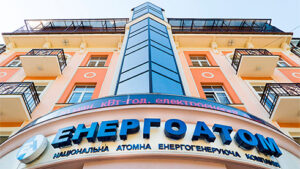
The National Bank of Ukraine, which previously included certain terms of “significant improvement in the security situation” in its basic macroeconomic forecast scenario, has abandoned this approach and instead published an alternative scenario in its April inflation report, the main difference of which is slower economic growth in 2025 with a larger budget deficit, weaker hryvnia and reduced international reserves.
“The alternative scenario is based on the assumption of higher security risks and, accordingly, a slower return of the economy to normal conditions over the forecast horizon. Under this scenario, Ukraine’s economy will recover more slowly in 2025 compared to the baseline scenario. However, the inflation trajectory will differ slightly,” the NBU said in the report.
As reported, in the first inflation reports for July and October 2022 after the pause caused by the Russian invasion, the NBU, in addition to the baseline, provided an alternative scenario with a longer period of war, but later abandoned it, although the IMF continued to provide such a scenario.
In the renewed alternative scenario in the April inflation report this year, GDP growth in 2025, in particular, will accelerate to only 3.3% from 3% this year, while the baseline scenario envisages economic growth of 5.3% next year.
At the same time, in 2026, the baseline scenario envisages a slowdown to 4.5%, while the alternative scenario envisages an acceleration to 5.6%.
According to the NBU, the economic recovery in the alternative scenario will be more fragile, even with more significant budget deficits. “Increased imbalances in the labor market amid a worse migration situation than in the baseline scenario will restrain consumer and business activity, and increase pressure on business labor costs. The recovery of industrial production from the damage and losses caused under this scenario will be slower, as will the recovery of sown areas,” the NBU said.
He added that the energy deficit will also have a negative impact on economic activity, which, however, is assumed to remain unchanged compared to the baseline scenario – about 5% in 2024-2025.
“Ensuring macro-financial stability will require somewhat higher volumes of international assistance and, at the same time, significantly higher spending of the NBU reserves to maintain a controlled situation in the foreign exchange market and moderate inflation,” the NBU emphasized.
According to the document, the main factor supporting the economy will be the continued maintenance of a softer fiscal policy than in the baseline scenario. The budget deficit, excluding grants in revenues, will amount to 18% of GDP in 2025 (13.5% of GDP in the baseline) and 12% of GDP in 2026 (7.5% of GDP in the baseline). The government will continue to spend heavily on infrastructure, social welfare, defense, and security. Their impact on the budget deficit will be partially offset by additional measures to mobilize budget revenues at 3.5% of GDP, the NBU added.
According to its forecasts, large budget deficits in 2025-2026 will be financed by both additional domestic and external borrowings. In particular, the alternative scenario envisages international assistance of $28.7 billion in 2025 and $18.5 billion in 2026, compared to $25.1 billion and $12.6 billion in the baseline scenario, respectively. “As a result, this will make it possible not to resort to monetary financing of the budget,” the NBU said.
According to the alternative scenario, budget deficits will lead to an increase in public and publicly guaranteed debt, which will approach 100% of GDP at the end of the forecast period.
The NBU added that the inflation trajectory will be similar to the baseline scenario, but it will require more significant spending of international reserves: consumer inflation will temporarily accelerate to 8.6% at the end of 2024, followed by a decline to 5.5% at the end of 2025, compared to 8.2% and 6.0% in the baseline scenario, respectively.
To cover the larger structural deficit in the foreign exchange market, the NBU will spend more of its international reserves. Therefore, despite the higher external financial assistance, the reserves will remain almost unchanged in 2024 and will decrease over 2025-2026 to $33 billion, while in the baseline scenario they will amount to $39.3 billion at the end of 2026.
“At the same time, such volumes of reserves will allow us to continue to gradually ease currency restrictions,” the NBU said.
As reported, Ukraine’s GDP, according to the State Statistics Service, grew by 5.3% in 2023 after a 28.8% decline in 2022.
Earlier, Experts Club and Maxim Urakin released a video analysis of how the GDP of the world’s countries has changed in recent years, more detailed video analysis is available here – https://youtu.be/w5fF_GYyrIc?si=BsZmIUERHSBJrO_3
You can subscribe to the Experts Club YouTube channel here – https://www.youtube.com/@ExpertsClub

The incumbent mayor of London, Sadiq Khan, has won re-election and will remain in office for a third term, Sky News reports.
In an election held in early May, Khan, who represents Labor, won 43.7% of the vote, while his Conservative rival Susan Hall won only 32.6%.
This is the first time in history that a London mayor will remain in office for three terms.
In early May, regional elections were held in the UK. According to the incoming data, Labor won a convincing victory. The Conservatives, on the contrary, showed the worst result in such elections for the last 40 years.
European media noted that the regional elections gave an insight into the balance of power in British politics ahead of the general election, which is expected to be held at the end of 2024.

The United States Agency for International Development (USAID) is allocating 60 million dollars to support Ukrainian agriculture, USAID Deputy Administrator Isobel Coleman has said, Radio Liberty has reported.
According to Coleman, the aid package is aimed at implementing a new Harvest program to mitigate the impact of Russian aggression on agricultural production in Ukraine.
“The program aims to help Ukrainian agrarians improve production efficiency, make it more resilient and competitive in times of war, and along with that lay the groundwork for long-term sustainable development of the Ukrainian agribusiness sector. Under Harvest, USAID will help create a regulatory and business environment in Ukraine that unlocks the potential for innovation and helps leverage private business resources to help Ukrainian agribusinesses continue to feed their country and many other countries around the world,” USAID said.
Coleman noted that the Ukrainian agricultural sector remains one of the main drivers of the Ukrainian economy – in particular, it contributed more than 60 percent of export revenues in 2023. USAID adds that the Harvest program will be part of the Agriculture Sustainability Initiative in Ukraine (AGRI-Ukraine). Since July 2022, the Agency has invested more than $350 million in it, attracting another more than $370 million from other donors.

World food prices fell 9.6% in April from a year earlier, the FAO (UN food and agriculture organization) said in its monthly report on Friday.
Meanwhile, March’s price index was revised up 0.3 percent, the document noted on its website.
The cereal price index rose 0.3 percent in April from March after three months of declines. World wheat export prices stabilized in April as strong competition among major exporters offset concerns about unfavorable crop conditions in several countries in the European Union, Russia and the United States. Export prices for corn were boosted by strong demand amid growing logistical disruptions from infrastructure damage in Ukraine and production concerns in Brazil ahead of the main harvest.
The vegetable oil price index also rose 0.3% year-on-year in March to a 13-month high. FAO indicated that higher quotations for sunflower and rapeseed oil offset a slight decline in palm and soybean oil prices.
The Meat Price Index increased 1.6 percent in April from the previous month as international poultry, beef and lamb prices rose. World pork prices declined slightly, reflecting sluggish domestic demand in Western Europe and persistently sluggish demand from leading importers, especially China.
The sugar price index declined 4.4% from March and was 14.7% below the April 2023 level. The decline was attributed to an improved global supply outlook, particularly due to higher than previously expected production in India and Thailand, as well as improved weather conditions in Brazil.
The Dairy Price Index declined 0.3% after six months of gains, driven by sluggish spot import demand for skim milk powder and lower global cheese prices due to a stronger U.S. dollar. In contrast, world butter prices rose on the back of robust import demand.

JSC Sumy Plant of Pumping and Power Engineering Nasosenergomash and JSC Research and Design Institute of Nuclear and Power Pumping are to be transferred to the management of NNEGC Energoatom.
As the Agency for Finding, Tracing and Management of Assets Derived from Corruption and Other Crimes (ARMA) reported on Facebook, a roadmap for the transfer of the seized assets to NNEGC is being developed following consultations with the Ministry of Economy and other authorities.
The transfer of property will take place in accordance with the procedure provided for in Article 21 of the ARMA Law (Peculiarities of Asset Management in Exceptional Cases).
As reported, Nasosenergomash shares were seized on June 2, 2022.
The owner and ultimate beneficiary of Nasosenergomash through the controlled H.M.S. Capital Limited is a citizen of the Russian Federation, Vladimir Lukyanenko, the founder and one of the shareholders of the Russian group Gidromashservice, which supplies equipment for various industries, including the military-industrial complex of the Russian Federation.

Global information technology (IT) spending will increase by 8% to $5.06 trillion in 2024, according to research firm Gartner.
The previous forecast, released in January, called for an increase of 6.8% (to about $5 trillion).
At the end of 2023, IT costs rose by 3.8% to $4.7 trillion.
Gartner analysts note that global spending in this area may surpass the $8 trillion mark well before the end of this decade.
Growth in data center spending is expected to accelerate to 10% this year, mainly due to plans to develop generative artificial intelligence. Meanwhile, IT services will be the largest market at nearly $1.52 trillion, the report said.
The average lifespan of cell phones is shrinking and consumers and organizations are buying new devices faster, which will push this market segment to grow in 2024 after it fell by 9% last year, experts believe.